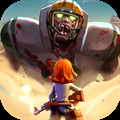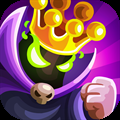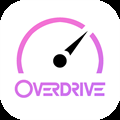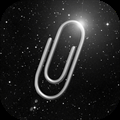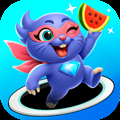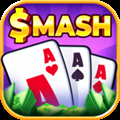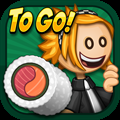
Hearthstone Terms and Terminologies:Introduction
Learning Hearthstone terminology is essential for new players to quickly grasp the game’s mechanics and stay informed about the evolving meta. These terms are frequently used in matches, streams, and strategy guides, forming the core language of Hearthstone and many other digital card games. Understanding this vocabulary enhances a player’s ability to interpret card effects, game mechanics, and various strategies while also making it easier to recognize deck archetypes. Additionally, it enables players to follow streams and community discussions with greater clarity and communicate effectively with other players. Mastering Hearthstone’s terminology provides a solid foundation for improving gameplay and strategic decision-making.
Gameplay Basics
Hearthstone’s core game elements define how matches unfold and how players interact with cards, resources, and the board. Mana is the primary resource used to play cards, starting at one mana crystal and increasing by one each turn up to a maximum of ten. If an effect would grant mana beyond ten, the player instead draws a card. Hero Powers are unique abilities available to each of the nine classes, costing two mana to activate and usable once per turn. Life (Health) determines a player’s survival, starting at 30 and decreasing when damage is taken; armor functions as additional life and can exceed 30.
The board is the battlefield where minions are played, with each player limited to a maximum of seven minions at a time. The hand consists of cards a player holds, with a limit of ten—any drawn beyond this limit is burned and destroyed. A turn consists of drawing a card, gaining a mana crystal, playing cards, attacking with minions or the hero (if a weapon is equipped), and using the hero power. The mulligan phase occurs at the start of a match, allowing players to replace unwanted cards in their opening hand with random draws from their deck, helping optimize their early-game strategy. Understanding these elements is fundamental to mastering Hearthstone’s mechanics and gameplay.
Core Concepts and Strategies
Deck Archetypes and Key Strategic Concepts
Deck archetypes define a deck’s playstyle, determining its approach to winning the game. Aggro decks focus on fast, aggressive play, using low-cost minions and spells to pressure opponents and win quickly, often within the first few turns.
These decks aim to dominate early and finish the game before the opponent can stabilize. Control decks take the opposite approach, using board clears, defensive minions, and high-value late-game cards to wear down opponents over time. By stalling and outlasting aggressive decks, Control decks look to secure victory in the late game with powerful finishers.
Midrange decks balance aggression and control, peaking in strength between turns 4-7. They aim to establish a strong presence in the midgame and transition smoothly into a win before Control decks take over. Tempo decks focus on efficient plays that maximize board presence while minimizing the opponent’s. A deck with strong tempo can consistently maintain board control through efficient trades and strategic resource use, making every turn impactful.
Key strategic concepts further define how players approach the game. Value refers to getting the most out of each card, whether through efficient trades, drawing multiple cards, or maximizing a single card’s impact. Card advantage means maintaining more resources than the opponent, which often leads to long-term control of the game.
Board control is essential for dictating trades and forcing the opponent into a defensive position. Mana curve represents the distribution of card costs in a deck, ensuring smooth gameplay without wasted mana. Trading involves minion combat, with value trades allowing a weaker minion to eliminate a stronger one efficiently. Fatigue occurs when a player runs out of cards, causing escalating damage each time they attempt to draw. Lethal is the guaranteed ability to defeat an opponent that turn, and win conditions define how a deck secures victory, whether through a specific combo, sustained pressure, or late-game dominance. Mastering these concepts helps players develop stronger strategies and improve their overall gameplay.
Deck Types and Styles
Specific Deck Archetypes
Different deck archetypes in Hearthstone define distinct strategies and playstyles, each with its own strengths and weaknesses. Zoo decks focus on swarming the board with low and mid-cost minions, maintaining board control through efficient trades before transitioning into aggressive attacks. This deck type is commonly associated with Warlocks, leveraging their hero power for consistent card draw. Highlander decks rely on decks without duplicate cards to activate powerful effects from specific cards, rewarding unique deck construction with high-value plays.
Mill decks aim to overfill an opponent’s hand with card draw effects, causing them to burn cards and eventually take damage from fatigue when their deck is depleted. Netdecking refers to using a pre-existing deck list from competitive play or online sources rather than creating a deck from scratch, a common practice among both casual and top-tier players.
Combo decks are built around executing a specific sequence of cards to generate overwhelming effects, often requiring setup and patience. Some One-Turn Kill (OTK) decks, also referred to as Exodia decks, are designed to deliver lethal damage in a single turn by assembling key cards. Burn decks focus on direct damage through spells and minions, often finishing off opponents with a sudden burst of damage.
Ramp decks accelerate mana gain to play high-cost threats earlier than usual, with Druid being the most iconic example of this strategy. Miracle decks revolve around drawing numerous cards in a single turn, leading to massive tempo swings with powerful minion buffs or spell synergies. Understanding these archetypes helps players choose a deck that fits their preferred playstyle while recognizing and countering different strategies effectively.
Card-Related Terms
Card Types, Attributes, and In-Game Elements
Hearthstone features several types of cards, each serving a distinct function. Minions are creatures placed on the board with attack and health values, belonging to various tribes such as Mech, Beast, Demon, Dragon, Murloc, Elemental, Pirate, and Totem. Playing a minion requires spending mana, while summoning refers to any effect that places a minion on the board without direct play. Spells are cards with immediate effects when cast, often influencing the board or providing utility. Weapons equip to the hero, allowing them to attack for a set number of turns based on their durability.
Card attributes and mechanics shape gameplay. Buffs increase a minion’s stats, while nerfs weaken cards by adjusting their cost, stats, or effects. Neutral cards can be used by any class, whereas class-specific cards are exclusive. Vanilla minions lack special abilities but have balanced stats for their cost. Removal refers to cards that eliminate or neutralize minions; hard removal destroys or transforms minions regardless of health, while soft removal relies on dealing damage. Area of Effect (AOE) spells or abilities impact multiple minions at once, making them crucial for board control. Tradeable is a keyword allowing certain cards to be exchanged for another in the deck for one mana.
In-game currency includes Arcane Dust, which is used to craft new cards. Rarity gems indicate a card’s rarity, with blue representing rare, purple for epic, and legendary cards featuring a unique dragon border. Golden cards are animated versions of regular cards, offering a visual upgrade without gameplay advantages. Understanding these elements is key to deck-building and in-game strategy.
Game Mechanics
Keywords and Game Mechanics
In Hearthstone, a keyword is a minion effect or ability displayed in bold text on a card. Each keyword has a unique function that influences gameplay. A single card can have multiple keywords, and many of these effects are fundamental to deck strategies. Battlecry effects trigger when a minion is played from hand, while Deathrattle effects activate when a minion dies.
Casts When Drawn triggers the card’s effect as soon as it is drawn. Charge allows a minion to attack immediately, whereas Rush restricts the first attack to other minions. Choose One offers Druids a choice between two effects when played. Combo, a signature Rogue mechanic, provides an additional effect if another card was played beforehand. Discover lets a player choose one of three cards to add to their hand.
Defensive mechanics include Divine Shield, which prevents a minion from taking damage once, and Taunt, which forces enemies to attack that minion first. Stealth makes a minion untargetable until it attacks, and Immune prevents a unit from taking damage or being affected by spells and effects. Silence removes all effects and text from a minion, stripping buffs and abilities. Reborn allows a minion to resummon itself with 1 Health after dying. Dormant minions are inactive until a set number of turns pass. Freeze prevents minions and heroes from attacking for a turn.
Certain keywords modify how a minion interacts in combat. Poisonous ensures any minion damaged by it is destroyed instantly unless protected by Divine Shield. Windfury lets a minion attack twice per turn, and Mega-Windfury increases this to four. Lifesteal restores Health to the player equal to the damage dealt by the minion or spell. Spell Damage boosts the effectiveness of damaging spells. Overheal, exclusive to Priests, triggers effects when a minion is healed beyond its maximum Health.
Overload, a Shaman mechanic, temporarily locks a portion of the player’s mana for the next turn. Outcast, specific to Demon Hunters, grants a bonus effect when played from the leftmost or rightmost position in hand. Secret cards are played face down and activate when specific conditions are met on the opponent’s turn.
Other game mechanics clarify how cards interact. Milling refers to forcing an opponent to overdraw cards, leading to their destruction. Fatigue occurs when a player has no cards left in their deck, causing increasing damage with each attempted draw. Understanding the distinction between playing, summoning, casting, and equipping is essential—playing refers to spending mana to put a minion on the board, summoning covers any method that places a minion into play, casting applies to spells, and equipping is specific to weapons. Mastering these mechanics is crucial for deck building and strategic play.
Community and Meta Terms
Meta (Metagame): The meta refers to the current state of the game in terms of popular and successful decks. It consists of all the decks being played at a given time, evolving based on balance changes, new expansions, and player adaptation. A “meta-defining” deck or card significantly influences what is played, while “meta decks” are the best and most widely used. “Off-meta decks” are viable but not as common, often used to counter the dominant strategies.
Ladder: The ranked play system where players climb in ranks by winning games. Progressing through the ladder involves increasing in rank and achieving higher placements.
Tech Card: A card specifically included in a deck to counter a common strategy in the meta. Tech cards cycle in and out of use depending on the prevalence of threats. Examples include Acidic Swamp Ooze to counter weapons and The Black Knight to remove taunt minions.
Top Deck: Drawing the exact card needed at the right moment, especially when playing with an empty hand and relying on the next card drawn.
RNG (Random Number Generation): Any mechanic that introduces a degree of randomness, such as summoning a random minion or casting a random spell. Cards like Yogg-Saron exemplify RNG-heavy gameplay.
BM (Bad Manners): Disrespectful in-game behavior, often involving excessive emoting, intentionally wasting time, or unnecessary prolonging of a game.
Roping: Letting the turn timer run out intentionally, often to frustrate the opponent or waste time.
Face/Going Face: Attacking the opponent directly rather than their minions. This strategy is common in aggressive decks aiming for a quick victory.
Face Tank: Taking damage by attacking an enemy minion with a hero, usually when wielding a weapon. Certain classes, like Warrior and Rogue, often rely on face tanking to maintain board control.
Ping: A small amount of direct damage, often referring to Mage’s hero power or similar effects from cards like Knife Juggler and Elven Archer.
Bounce: Returning a minion from the board to the hand, often with cards like Shadowstep or Brewmaster. This mechanic is more impactful in games with limited hand sizes, such as Duelyst.
Build-around: A deck designed around a specific card or synergy, such as decks built around Galakronds or other powerful archetype-defining cards.
Cantrip: A card that has an additional effect, usually drawing another card, making it a low-cost way to cycle through the deck.
Cycle: Drawing cards to keep up momentum, often through spells or abilities that allow consistent card draw. Cards like Gadgetzan Auctioneer are well-known for enabling heavy cycling.
Direct Damage: Damage dealt directly to a chosen target, bypassing taunt or minions. This includes spells like Fireball or minions with charge that can immediately attack the opponent.
Drop: A minion played onto the board, often specified by mana cost (e.g., a “1-drop” or “3-drop”).
Elusive: A term for minions that cannot be targeted by spells or hero powers.
OP (Overpowered): A card deemed too strong, often leading to calls for a nerf. Cards like Dr. Boom and Keeper of the Veil have historically been considered OP.
Ramp: Gaining additional mana faster than usual, typically through cards like Wild Growth in Druid decks.
SMOrc: A term originating from Twitch, often used to describe an aggressive playstyle focused entirely on hitting the opponent’s face.
Sticky: A board state or minion that is hard to remove. Deathrattle minions that summon another minion upon death are considered sticky.
Token: A small minion generated by another card’s effect, such as Paladin’s Silver Hand Recruits.
Tutor: A card that specifically draws another card based on criteria, such as drawing a spell or a minion of a particular type.
Two-for-One: A trade where one card removes or outvalues two of the opponent’s cards, generating card advantage. Board clears often create two-for-one scenarios.
Wide/Tall Board: A wide board consists of many small minions, while a tall board consists of fewer but larger minions. Some decks prefer flooding the board (Zoo decks), while others prefer stacking stats on one or two units.
Curve Out/Playing on Curve: Playing cards in a sequence where each turn uses all available mana efficiently, such as playing a 1-drop on turn one, a 2-drop on turn two, and so on.
Dead on Board: A situation where a player is guaranteed to lose on the opponent’s next turn based on the existing board state.
Hero/General: The playable character representing a deck. In Hearthstone, it’s called a Hero, while in Duelyst, it’s referred to as a General.
Mana Debt: A concept where a player is forced to spend more resources than their opponent to deal with threats, leading to an unfavorable trade in tempo or mana efficiency.
Pushing the Button: Slang for using the hero power.
Reggie: A community nickname for Ragnaros the Firelord.
Shame Concede: Conceding immediately after making a major misplay or error out of embarrassment.
Synergy: The interaction between cards that enhances their effectiveness when played together. Tribal synergies, such as Murlocs buffing each other, are common examples.
Tilt: Playing poorly due to frustration, often leading to a losing streak as emotions override logical decision-making.
Tribes: Special classifications for minions that often have synergies within their type. Examples include Murlocs, Beasts, Demons, Dragons, Elementals, Mechs, Pirates, and Totems.
Outs: Cards that can turn a losing game around if drawn at the right time. Playing to your outs involves maximizing the chances of drawing these game-changing cards.
Dudes: A term for Paladin’s Silver Hand Recruit tokens.
Playing off the Top: A scenario where both players are drawing and playing whatever cards they get each turn due to having no cards in hand.
Coining: Using The Coin, a card that grants a temporary extra mana crystal for one turn, often used to gain an early tempo advantage.
Card Set and Slang Nicknames
Common Card Nicknames and Set Abbreviations
Hearthstone has a rich history of community-created nicknames for iconic cards. “Rag” is short for Ragnaros, the Firelord, a legendary minion known for its high damage and inability to attack directly. “Sheep” refers to a minion transformed into a 1/1 Sheep by the Mage spell Polymorph, while a similar effect in Shaman turns a minion into a Frog via Hex.
“Yogg” is shorthand for Yogg-Saron, Hope’s End, a card infamous for its chaotic, spell-casting effect. Other notable nicknames include “4-Mana 7/7” for Flamewreathed Faceless, which was notorious for its raw stats, “BGH” for Big Game Hunter, a card used to counter high-attack minions, and “Dr. 7” or “Dr. Balanced” for Dr. Boom, a once-dominant legendary known for its overwhelming power level.
Hearthstone expansions and adventures are commonly abbreviated. TGT stands for The Grand Tournament, which introduced the Inspire mechanic. LOE refers to League of Explorers, known for the Discover mechanic and memorable adventure design. WOG, WotOG, or OG abbreviates Whispers of the Old Gods, an expansion centered around powerful Old God-themed cards. ONiK or Kara refers to One Night in Karazhan, a lighthearted adventure inspired by the Karazhan raid in World of Warcraft. MSG or Gadgetzan represents Mean Streets of Gadgetzan, which introduced tri-class cards and faction-based mechanics. Similarly, JtU, JUG, or Un’Goro refers to Journey to Un’Goro, an expansion that brought the Adapt mechanic and powerful Quest cards.





